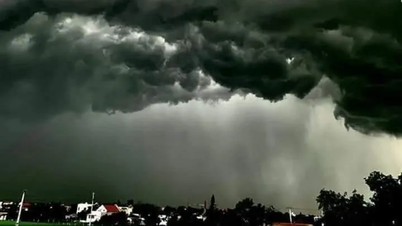A patient infected with the Marburg virus is treated at a hospital in Uige province, Angola. (Photo: AFP/VNA)
The US Centers for Disease Control and Prevention (CDC) has just issued a warning to medical staff and health agencies in the country to be on guard against the risk of infection with the Marburg virus - a rare virus as dangerous as the Ebola virus.
According to a reporter in the US, the above warning was issued by the CDC after the Marburg virus outbreak in Equatorial Guinea and Tanzania.
As of April 7, the United States has not recorded any cases of Marburg virus and no other country in the world has reported Marburg, but the CDC said it is still issuing alerts to "provide information about these outbreaks to raise awareness of the risk of disease spread to the United States."
On March 21, the Tanzanian Ministry of Health announced that eight fishermen had been infected with the Marburg virus, four of whom had died.
In Equatorial Guinea, since February 7, there have been 14 confirmed cases of Marburg virus infection and 10 of them have died.
According to the CDC, there is currently no evidence that the two outbreaks in Tanzania and Equatorial Guinea are related and appear to be two separate outbreaks caused by the virus spreading from animals to humans. The CDC has sent staff to the two African countries to help fight the epidemic.
Marburg virus disease (MVD) is a rare disease caused by the Marburg virus, a cousin of the Ebola virus.
Marburg virus can be transmitted from animals to humans, or from person to person through contact with blood or other body fluids contaminated with the virus, or by touching objects contaminated with such fluids.
The incubation period for MVD from exposure to symptom onset ranges from 2 to 21 days.
According to the CDC, a patient can only infect others when symptoms appear.
Symptoms of MVD include fever, headache, fatigue, muscle and joint pain, loss of appetite, gastrointestinal symptoms, or unexplained bleeding. MVD can cause serious complications such as internal bleeding or organ damage.
The CDC notes that it can be difficult to diagnose MVD, as many of the signs and symptoms of MVD are similar to those of other infectious diseases such as malaria or typhoid fever, or to viral hemorrhagic fevers that may be prevalent locally, such as Lassa fever or Ebola. This is especially true if there is only one case.
There is currently no specific treatment regimen for MVD, but doctors mainly focus on patient support measures such as electrolyte balance, maintaining oxygen levels and blood pressure.
The CDC assesses that the risk of MVD spreading to the United States remains low, but recommends that doctors test anyone who has symptoms or may have been exposed to the virus in an outbreak area.
According to the World Health Organization (WHO), previous MVD outbreaks have had case fatality rates ranging from 24-88%, with an average of 50%.
Source link

































































































Comment (0)